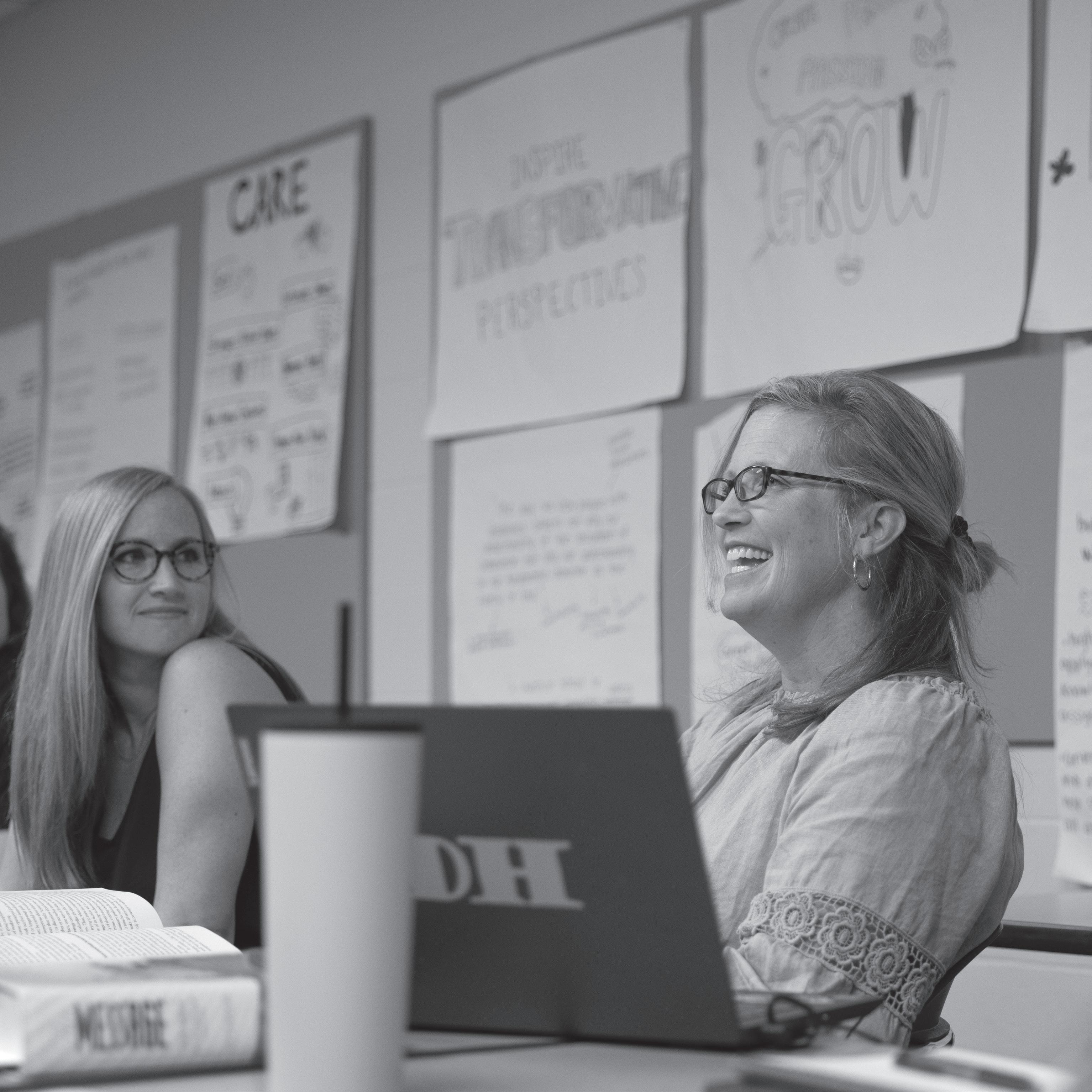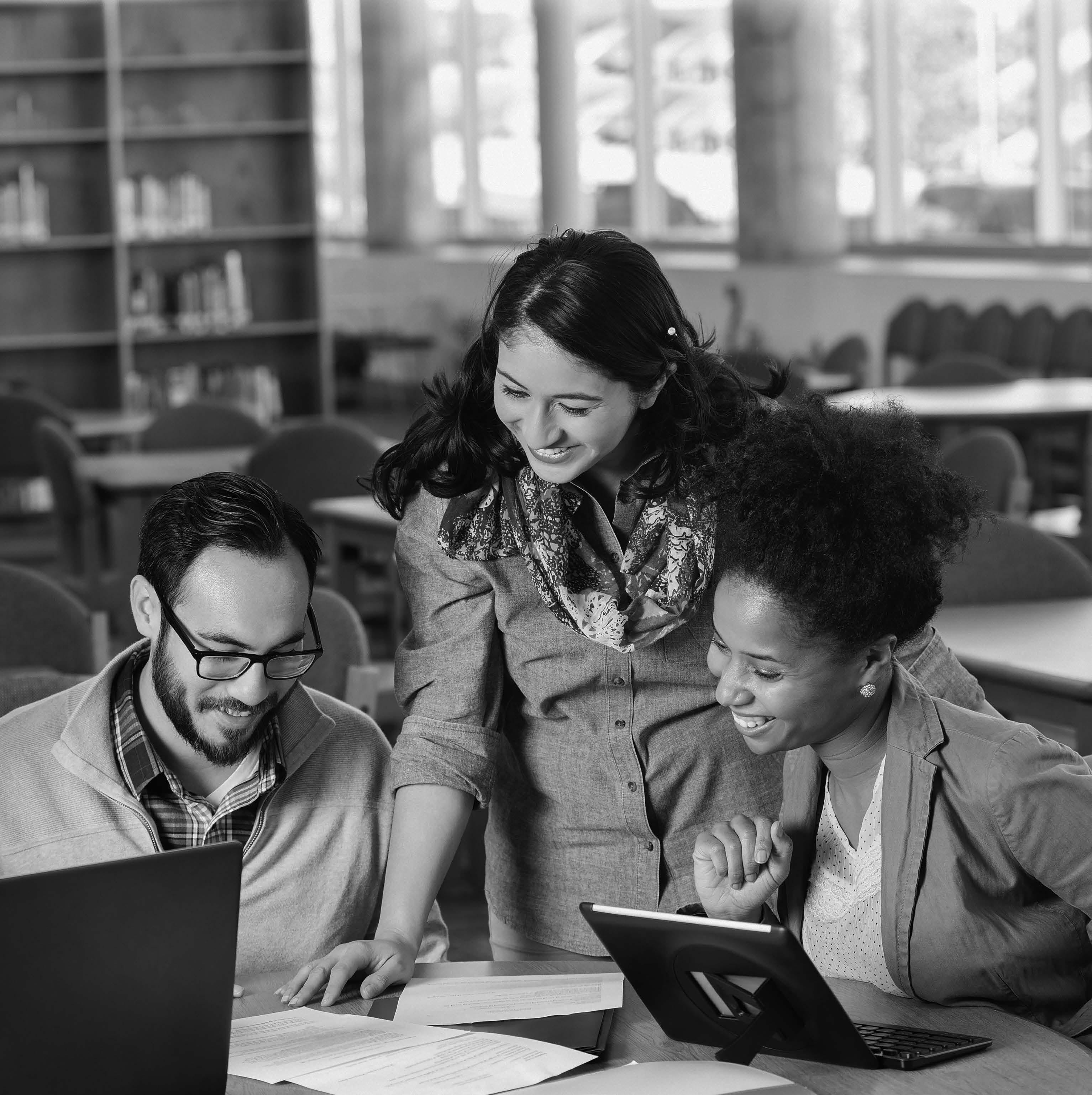
9 minute read
Building Thriving Science Laboratory and Classroom Communities
AMY WILSTERMANN
In recognition of both the need of scientists to work in community and the challenges inherent in these efforts, a new area of study has emerged—the Science of Team Science.
Science is a collaborative endeavor. Understanding of observed phenomena improves over time, as the findings of one scientist generate new questions that are investigated by another scientist. Further, teams of scientists with diverse expertise are often needed to tackle complex challenges. Consider, for example, the World Health Organization’s Sustainable Development Goal 3: Good Health and Well-Being. Achieving this goal will require the efforts of a variety of scientists—biochemists, geneticists, and environmental toxicologists, to name a few—as well as the expertise of those representing other fields of study, such as sociologists, public policy experts, and economists. Addressing this, as for any complex challenge, will require individuals to work across disciplinary boundaries, as well as differences in age, gender, language, and race/ethnicity.
It is important that all our students understand and appreciate the collaborative nature of science, as this helps students understand why scientific advances occur incrementally over time, building upon the knowledge of others. Further, an awareness of the collaborative nature of science helps students recognize the value of having a diverse set of people with varied skills and experiences at the table when addressing big questions. Beyond recognizing collaborative efforts, it is also important for students to develop skills that will equip them to work effectively in collaborative team settings, scientific or otherwise. In our work as educators, we devote significant time and energy to developing students’ discipline-specific knowledge and technical skills, preparing them for the next level of education or work in their chosen field of study. Do we, however, provide them with the tools necessary to thrive and be productive in the collaborative environments that they will encounter? This is a question that my colleague Rachael Baker and I have asked in our roles as teachers and research mentors at Calvin University.
In recognition of both the need of scientists to work in community and the challenges inherent in these efforts, a new area of study has emerged— the Science of Team Science (SoTS). Studies within this field have identified numerous benefits of team science endeavors, including enhanced capacity to achieve goals, increased productivity and impact, and improved outcomes for individual team members. Studies have also identified several factors that hinder the attainment of team science benefits, such as difficulties associated with communicating across differences and coordinating shared tasks (Cooke and Hilton 24–38). SoTS researchers have recommended strategies for enhancing benefits and mitigating challenges. Many recommendations build upon studies of non-science teams—athletic, business, and military teams. This prompted Rachael and I, faculty at a faith-based institution, to ask another question: What insights might we be able to gain
about building thriving, productive teams in laboratory and classroom settings by studying successful faith communities? We recognized that, similar to the practice of science, the practice of living a rich, faithful Christian life is a collaborative, communal endeavor. Further, we realized that faith communities have been living and working together successfully for thousands of years. Consider the monastic tradition where monks live, worship, and work together throughout their lives. In current culture, we find intentional Christian living communities where members commit to sharing space, time, and money and collaborate in work and ministry endeavors.
To answer our question, we interviewed and visited several faith-based intentional living communities that displayed characteristics—safety, inclusivity, productivity, and individual well-being—that we desired to see in our classroom and laboratory communities. Through discussions and observations, in addition to engagement with readings on the topic of Christian community, we identified several practices that are employed within successful groups. We discovered that the employed practices are valuable because together they foster thriving communities, which, in turn, promote safety, inclusivity, productivity, and well-being. These qualities enable communities to best utilize the gifts of diverse team members and achieve common goals.
Some of the practices that we identified as important contributors to the development of thriving community are hospitality, humility, learning together, self-reflection, gratitude, silence, and rest. We have incorporated these practices into our classrooms and research spaces in various ways over the past several years. Below, I will describe how the practice of hospitality has been integrated into educational settings and the impact it has made on classroom and laboratory communities.
In the educational spaces where we have employed Christian practices, we have discovered that the practice of hospitality serves as an important building block, a practice that facilitates engagement with several others. As a result, this practice is introduced to students early in classes and research experiences. Hospitality, as described by Adele Calhoun, involves generously welcoming guests to our homes or communities (including our classrooms and laboratory communities) and to our tables (161). Hospitality facilitates a sense of belonging, which further facilitates trust, allowing community members to be vulnerable and take risks. Vulnerability and a willingness to take risks is essential in science, as these qualities enable individuals to ask new questions and propose new hypotheses—many of which will be incorrect. Further, in a learning environment, feelings of belonging, built through displays of hospitality, provide the safety required for students to ask or attempt to answer a question or seek assistance from a teacher or classmate.
Our students are introduced to the practice of hospitality through a discussion about the value of hospitality in educational settings, as described above, as well as a discussion about behavioral cues (hospitality practices) that can serve to signal belonging in a community. These cues include active listening, the inclusion of all voices in discussions, the recognition and appreciation of team members’ experiences and skills, and small attentive courtesies.
The next step in developing the practice of hospitality in our classrooms or research spaces is providing students with opportunities to employ and
The practice of living a rich, faithful Christian life is a collaborative, communal endeavor.
Vulnerability and a willingness to take risks is essential in science, as these qualities enable individuals to ask new questions and propose new hypotheses.
Practicing hospitality as an educator involves taking time to explain structures, practices, and rhythms of the community, using accessible language, and celebrating the unique contributions of each student.
reflect on the practice. Students are asked to be intentional about utilizing behavioral cues that signal belonging and to make a list of belonging cues that are practiced by others within their classroom, small group, or research team. At the end of a defined period, students are prompted to consider the impact of hospitality practices within their community and discuss the long-term effects of enhanced belonging, increased safety, and deeper appreciation of diversity within the community.
Students are also provided with opportunities to consider what the practice of hospitality might look like in other team settings, such as athletic teams, volunteer organizations, or work environments. Since many of our science students are planning to pursue careers in the health professions, we often spend time considering hospitality in health care teams. Students think carefully about who is part of the team—health care providers representing various specialties and educational backgrounds, patients, and family members—and how practices such as using accessible language, valuing others’ skills and experiences, and listening attentively can improve team (and patient) outcomes.
In addition to teaching students about hospitality and giving them opportunities to demonstrate hospitality, it is also critically important to model hospitality for our students. As teachers and mentors, we are inviting students into our spaces to join a learning community. Practicing hospitality as an educator involves taking time to explain structures, practices, and rhythms of the community, using accessible language, and celebrating the unique contributions of each student. It also involves helping students find their place within the learning community—a place that enables them to participate in meaningful ways in the community.
Feedback we have received from students indicates that they are recognizing the value of hospitality practices in helping to build a thriving community characterized by safety, inclusivity, productivity, and well-being. One student provided this feedback:
Creating a space in which people can belong and communicate well is hard. It takes effort and intentionality, but for the health, productivity, and longevity of a team, it is necessary. One overarching principle in showing hospitality is making an intentional space in which each person feels valued and can thrive.
As educators, we are committed to the development of our students’ knowledge and technical skills. But to fully prepare them to engage with scientific questions as professionals or informed citizens, we need to provide them with an expanded toolkit. Equipping students with an understanding of the collaborative nature of science helps them to recognize and value the individual contributions of team members who bring a variety of skill sets, insights, and experiences to their work. This understanding can raise awareness of the importance of diversity and collaborative work in a variety of educational and non-educational settings. Further, equipping students with practices that facilitate effective participation in collaborative environments will enable them to contribute in meaningful ways to team thriving and will enhance safety, inclusivity, productivity, and well-being. Our study of successful faith-based communities has given us new and exciting ways to integrate our faith commitments and our work as
educators. We have identified several Christian practices that can be readily woven into learning environments, enhancing classroom or laboratory communities and preparing students for future collaborative work. As described, the practice of hospitality is a useful first practice that prepares students to engage in other community-building practices. Articles that follow in this special issue of Christian Educators Journal will describe some of the other practices that we identified and how they can be integrated into learning environments to build community, enhance learning, and promote student well-being.
Works Cited
Calhoun, Adele A. Spiritual Disciplines Handbook: Practices that Transform Us.
InterVarsity, 2015. Cooke, Nancy J., and Hiton, Margaret L., eds. Enhancing the Effectiveness of
Team Science. National Academies Press, 2015.
Amy Wilstermann is a professor of biology and director of the Honors program at Calvin University. Her research interests include mitochondrial rare diseases and virtues development for building community to support team science endeavors. She is a co-founder of the Rare Disease Network, which aims to build community among scientists, medical professionals, students, and patients.

MASTER



OF Open up new possibilities for yourself through graduate education. Deepen your EDUCATION knowledge of educational practice. Explore how education is situated in society, politics, and economics. Discover new possibilities AFFORDABLE. DOABLE. REMARKABLE. for greater inclusion of all types of learners.



Open up new possibilities for yourself through graduate education. Deepen your knowledge of educational practice. Explore how education is situated in society, politics, and economics. Discover new possibilities for greater inclusion of all types of learners.


Four possible concentrations • Inclusion Specialist • Literacy Specialist • Educational Leadership • Curriculum & Instruction
FALL 2022 COURSES
Online 2nd session (Oct. 24- Dec. 7) • Advanced Foundations • Reading Assessment & Instruction
SPRING 2023 COURSES
Online 1st session (Jan. & Feb.) • Pathways to Inclusion Online 2nd session (March & April) • Early Literacy • Leading Educational Communities • Designing Instruction for Successful Learning




